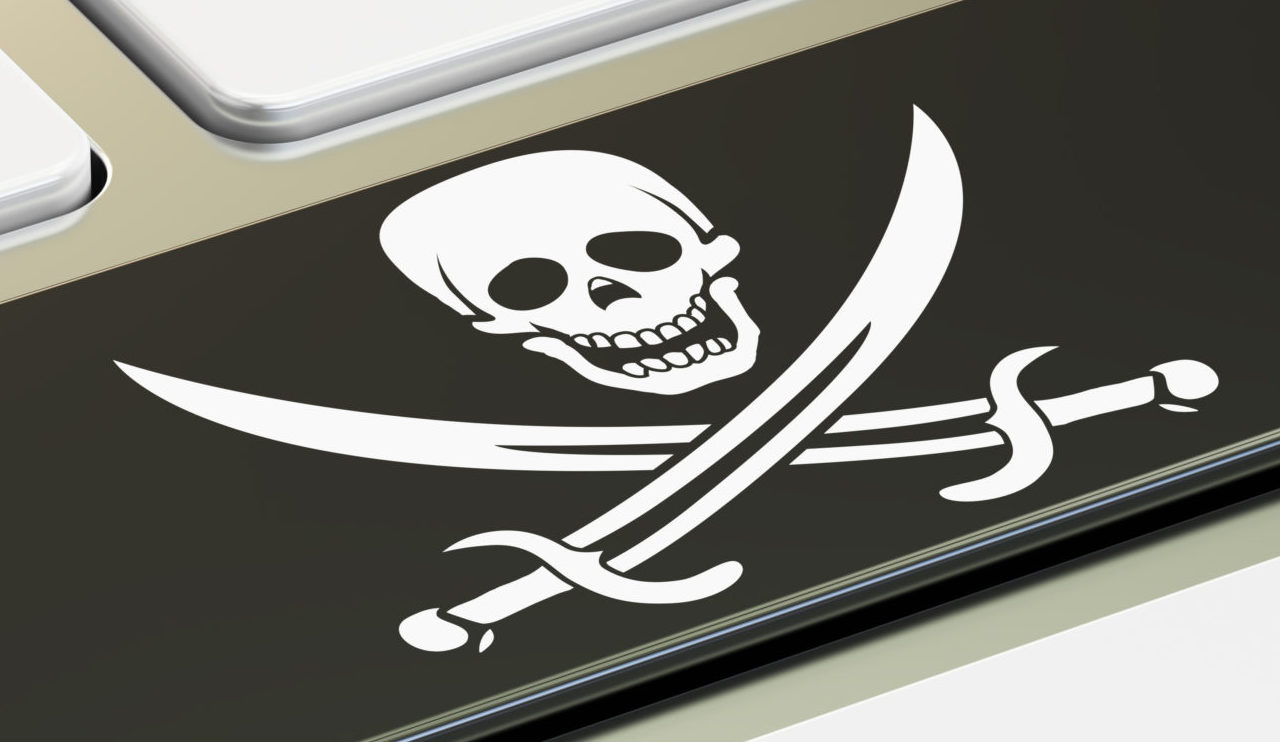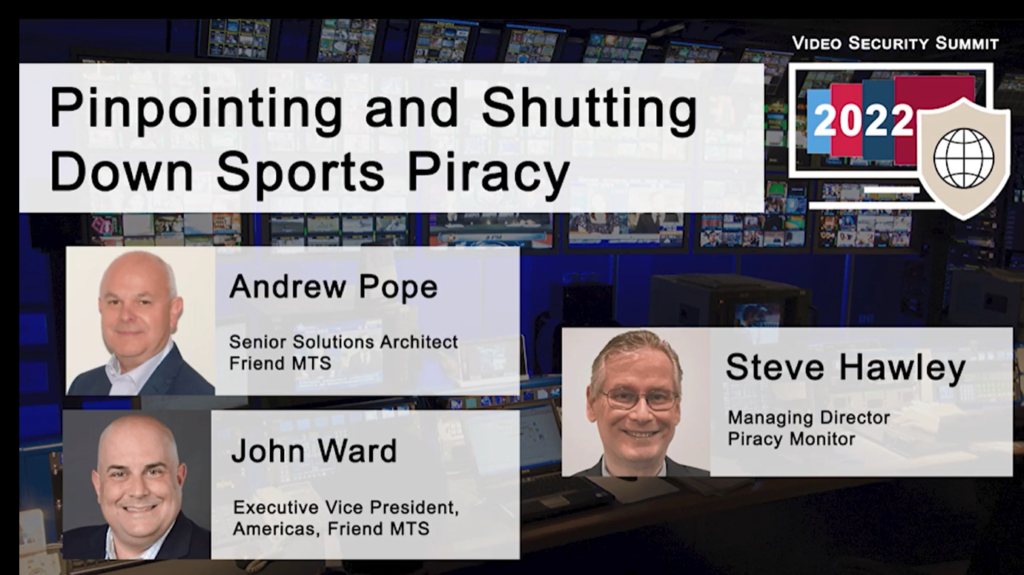
Video Security Summit: Piracy Remains a Challenge for Sports Programming
Popular sports programming is especially vulnerable to piracy and quickly identifying infringing use is critical, according to Friend MTS, a content security company based in Birmingham, U.K. that provides platform, channel and content protection services globally.
The reason: Sports programming itself is valuable and sports matches only hold their value while the event is in progress. Additionally, sports leagues and video distributors are typically held to strict exclusivity terms and, as soon as a match gets out in the wild, those terms are breached.
“People are pirating content that is exclusive and obviously desirable, and there’s probably nothing more desirable than live exclusive sports content,” John Ward, EVP, Americas at Friend MTS, said June 14, during the session “Pinpointing and Shutting Down Sports Piracy at Lightning Speed” at the online 2022 Video Security Summit.
“It happens once. You get to watch it once. There’s passionate fan bases around all leagues and all sporting events,” he added.
 “Look, there’s no shortage of piracy in any of these events but the good news is what we’re seeing is leagues in particular really starting to take piracy more seriously, which is a good thing,” Ward said. “There are leagues that are starting to make anti-piracy and content protection security exhibits as part of overall contractual deals, which is a very good thing. So clearly it’s become a hot source of discussion.”
“Look, there’s no shortage of piracy in any of these events but the good news is what we’re seeing is leagues in particular really starting to take piracy more seriously, which is a good thing,” Ward said. “There are leagues that are starting to make anti-piracy and content protection security exhibits as part of overall contractual deals, which is a very good thing. So clearly it’s become a hot source of discussion.”
He added: “All we’re really trying to do is to get the attention put on this because so many times, between broadcasters who licensed the content versus the people who actually own the content, there’s a lot of finger pointing about where the responsibility lies, and the truth is the responsibility lies with all groups that are involved…. The bottom line is, if they all take it seriously, we have a better chance at diminishing piracy. You won’t ever truly defeat it but we can definitely make it harder for the pirates to get this content.”
Friend MTS is “constantly fingerprinting content and going out there and understanding what the pirates are doing, how they’re evolving to get the content,” he pointed out. “We’ve worked with sports leagues to help identify rogue streams and help these leagues actually take legal action against these entities that are doing this stuff.”
Additionally, “we watermark content to help identify not only at a subscriber level but also at a distribution partner level because a lot of this content is licensed and redistributed to other takers and throughout regions all across the world,” he said. After all, “to be able to understand, one, that there is a leak and, two, who’s actually creating the leak, that’s huge, right?” he said. “Because that’s how you kind of get to the root of the problem and, better, kind of work back and figure out how they’re actually taking the content illegally.”
Moderator Steve Hawley, Piracy Monitor managing director, asked where the holes are specifically when it comes to pirates being able to breach a company’s system.
“There are holes everywhere unfortunately,” replied Andrew Pope, senior solutions architect at Friend MTS. However, he said: “Some systems are very well implemented and there are very few holes and it’s very hard to steal content from those platforms…. But we do see vulnerabilities in CDN servers and in terms of our concurrent usage and things like that.”
On the digital rights management (DRM) front, the encryption is “pretty solid” but there can be “vulnerabilities” when it comes to licensing and apps receiving content that can be exploited by pirates, Pope warned.
The large cost of anti-piracy investments remain a barrier to entry for many companies in the sector, who tend to be “notoriously conservative,” Hawley also pointed out during the session.
Explaining what a company will get back in return for making an investment in anti-piracy is important, according to Ward. But, “that as an industry we’ve got to do a better job of,” Ward conceded. “We do need to do a better job of trying to quantify the issue” and also explaining that “these are the countermeasures” being taken and how it can help clients, he said.
There are, however, “so many factors” that come into play that it’s hard to specify how much a company will save by spending a certain amount of money on anti-piracy, Ward also conceded.
Meanwhile, companies in the sector must “continue to evolve” as new challenges arise, Ward said. Although data suggests piracy is on the decline, he said the problem is likely worse than what’s being reported, he noted. Hawley and Pope agreed.
The event was presented by Piracy Monitor and nScreenMedia, produced by MESA, with sponsorship by Akamai, Verimatrix, FriendMTS, and Intertrust ExpressPlay, and was held in association with the Content Delivery & Security Association (CDSA).
